After Colorado legislators passed landmark climate legislation in 2019, which included a statutory mandate directing the Air Quality Control Commission (AQCC) to adopt rules and regulations to reduce statewide emissions, the state has yet to adopt a policy framework capable of getting the job done. This three-part series explores the impact of Colorado’s delay, analyzing the impact on total emissions and the state’s ability to meet its own climate targets.
Editor’s note: This post was last updated Feb. 15, 2021 to correct Colorado’s target emissions from gross to net emissions, consistent with data used throughout this analysis. It was also updated Feb. 2, 2021 to reflect Xcel Energy’s announcement to retire two units of the Hayden coal-burning power plant in 2027 and 2028. 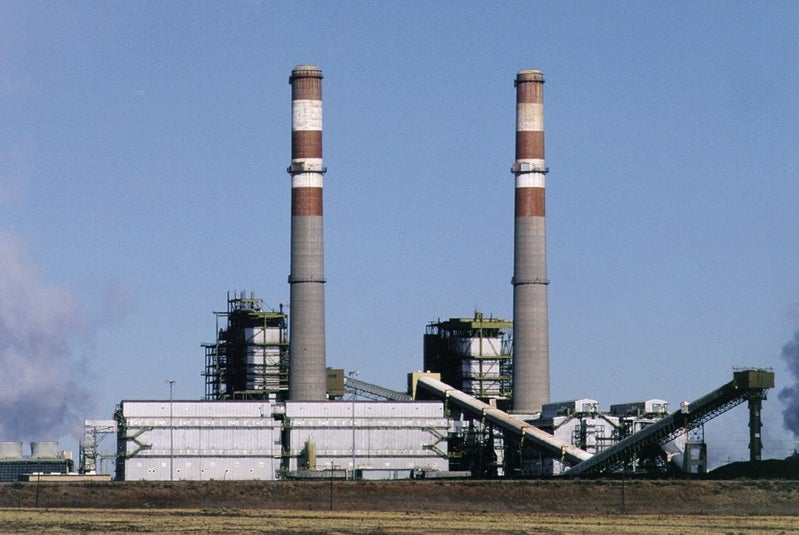 Comanche coal power plant in Pueblo, Colorado.
Comanche coal power plant in Pueblo, Colorado.
When it comes to reducing greenhouse gas emissions, Colorado—like many other states with leading science-based climate commitments—has a disconnect between rhetoric and reality. Colorado is far from where it needs to be to meet its climate goals, and state regulators just recently slammed on the brakes on a small but important step forward.
After initially voting to accelerate three coal plant retirements as part of a Regional Haze rulemaking in November, state Air Quality Control Commissioners reversed their decision under pressure from the Polis administration to revert back to the later coal plant retirement dates volunteered by industry.
Yet new analyses from EDF, and those released by both the state and other researchers, underscore that Colorado can’t afford a cavalier approach to curbing climate-warming pollution. The state is still far from having a policy framework in place capable of cutting greenhouse gas emissions at the pace and scale required—and Colorado’s first emissions target is right around the corner in 2025.
EDF’s analysis on the impact that these delays will have on total emissions this decade—which will translate into long-term climate damages—underscores why Colorado urgently needs a policy framework that will deliver the ambitious emission reductions that science—and state law—demand.
Colorado’s statutory obligation for action
The Colorado General Assembly set an urgent, science-based timeline when it passed a statutory mandate in 2019 requiring the Air Quality Control Commission (AQCC) to adopt rules and regulations to reduce statewide emissions 26% by 2025, 50% by 2030 and 90% by 2050, all relative to 2005 emissions. The statute expressly and exclusively assigns the responsibility to achieve these reductions to the AQCC. While the AQCC can take into account other efforts, it is the expert state agency with the sole responsibility and authority to craft a regulatory framework that results in definite, quantifiable and enforceable reductions as required by law.
Importantly, the legislature understood the urgency of reducing emissions, further requiring the AQCC—by July 1, 2020—to propose “rules to implement measures that would cost-effectively allow the state to meet its greenhouse gas emission reduction goals.” The state is nearly six months behind on meeting that mandatory duty, and despite exhaustive public comment through the past year from state and local elected officials, frontline communities, and citizens across Colorado, the Polis administration has no plans to begin the comprehensive and inclusive regulatory process required.
The science matters: near-term reductions are key
This delay has serious consequences for the health and safety of Colorado communities and our planet. Reducing emissions of short-lived climate pollutants (e.g. methane) – which govern the rate of warming – is crucial for slowing the pace of warming. And reducing emissions of long-lived climate pollutants (e.g. carbon dioxide) – which govern the maximum extent of warming – is crucial for limiting the overall amount of warming, and therefore the full extent of climate damages. As we continue to emit long-lived pollutants like CO2, which can remain in the atmosphere for centuries, the warming effect of those gases will further exacerbate the climate devastation Colorado is already experiencing, including record-breaking wildfires that destroy homes and produce dangerous air pollutants.
Every decade, year and day on our current trajectory—failing to make the needed reductions—will result in additional emissions building up in the atmosphere. When the stakes are this high and the timeline is so urgent, every ton we emit matters. To minimize long-term climate damages, we need to minimize the cumulative build-up of carbon dioxide and stay within the carbon dioxide budgets identified by the Intergovernmental Panel on Climate Change (IPCC).
This is why the AQCC’s decision to reverse course on accelerating multiple coal plant retirements, on top of the state’s delay in promulgating regulations and refusal to seriously evaluate policy mechanisms for much faster and deeper reductions is unconscionable, especially in the wake of the most extreme wildfire season Colorado has ever experienced. Colorado legislators, on the other hand, recognized this urgency when they set a clear timeline to swiftly propose regulations and a near-term target in 2025.
The impact of delay on total emissions in four charts
To illustrate how the pace of Colorado’s emission reductions will affect the total pollution emitted in the atmosphere over the next decade, EDF constructed and compared three example emissions trajectories (outlined in Figure 1) that all arrive at Colorado’s annual target in 2030. The first trajectory delays action until 2025; the second trajectory reduces emissions on a linear path first to the 2025 and then to the 2030 targets; and the final pathway accelerates reductions with ambitious action early on in the decade.
Figure 1: Example Emissions Trajectories in Colorado (2020 – 2030)
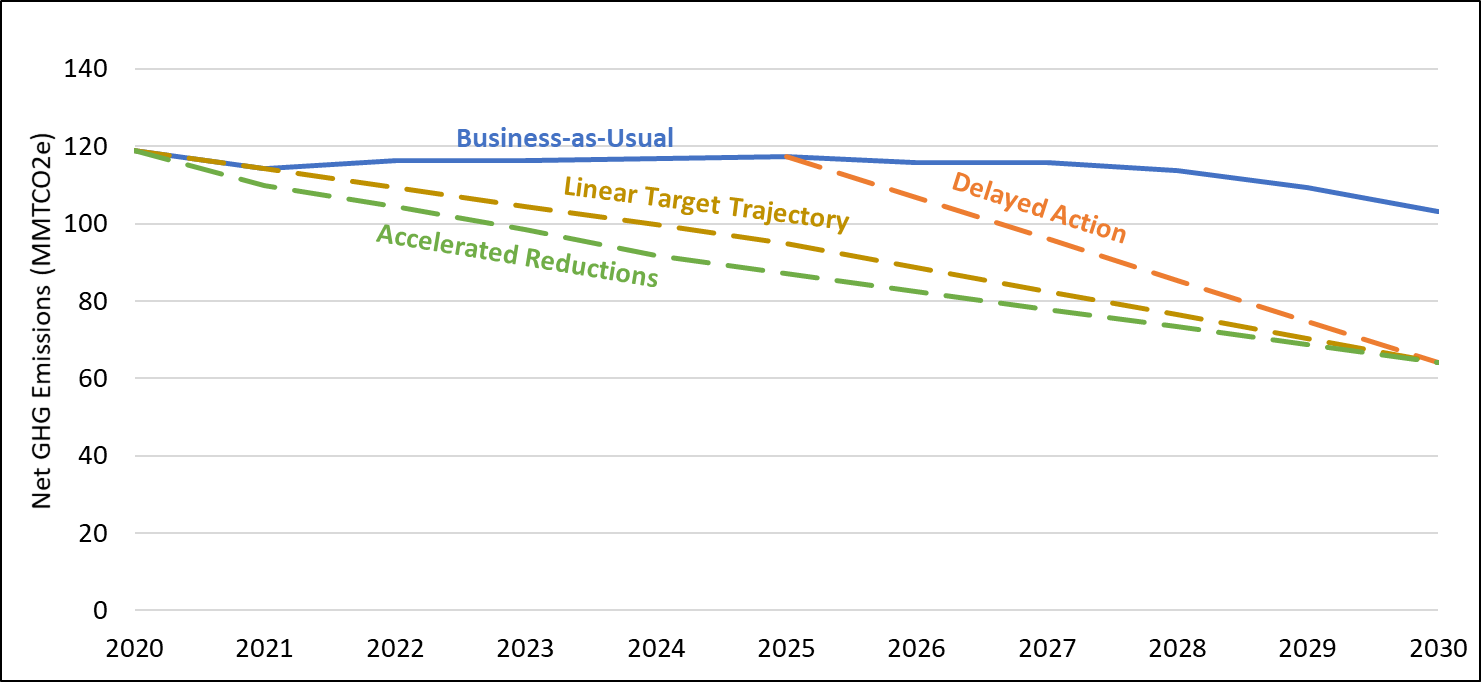
BAU emissions over the decade assume Rhodium Group’s V-shaped economic recovery scenario from the pandemic. The “accelerated reductions” path could achieve more than the reductions required in 2025 by retiring all coal-fired plants and replacing them with clean energy by 2024.
Figure 2 and Figure 3 underscore the profound implications for total greenhouse gas pollution. The area in the charts beneath the emission reduction trajectory shows the cumulative quantity of emissions that Colorado emits, while the area between the reduction trajectory and the business-as-usual (BAU) trajectory indicates the cumulative quantity of emissions that Colorado reduces. While both timelines would result in the same annual emissions in 2030, the accelerated reduction trajectory prevents more than twice as much pollution from entering the atmosphere over the course of the decade—a difference of 150 million metric tons CO2e of pollution.
Figure 2: Example Delayed Action Emission Reduction Trajectory in Colorado (2020 – 2030)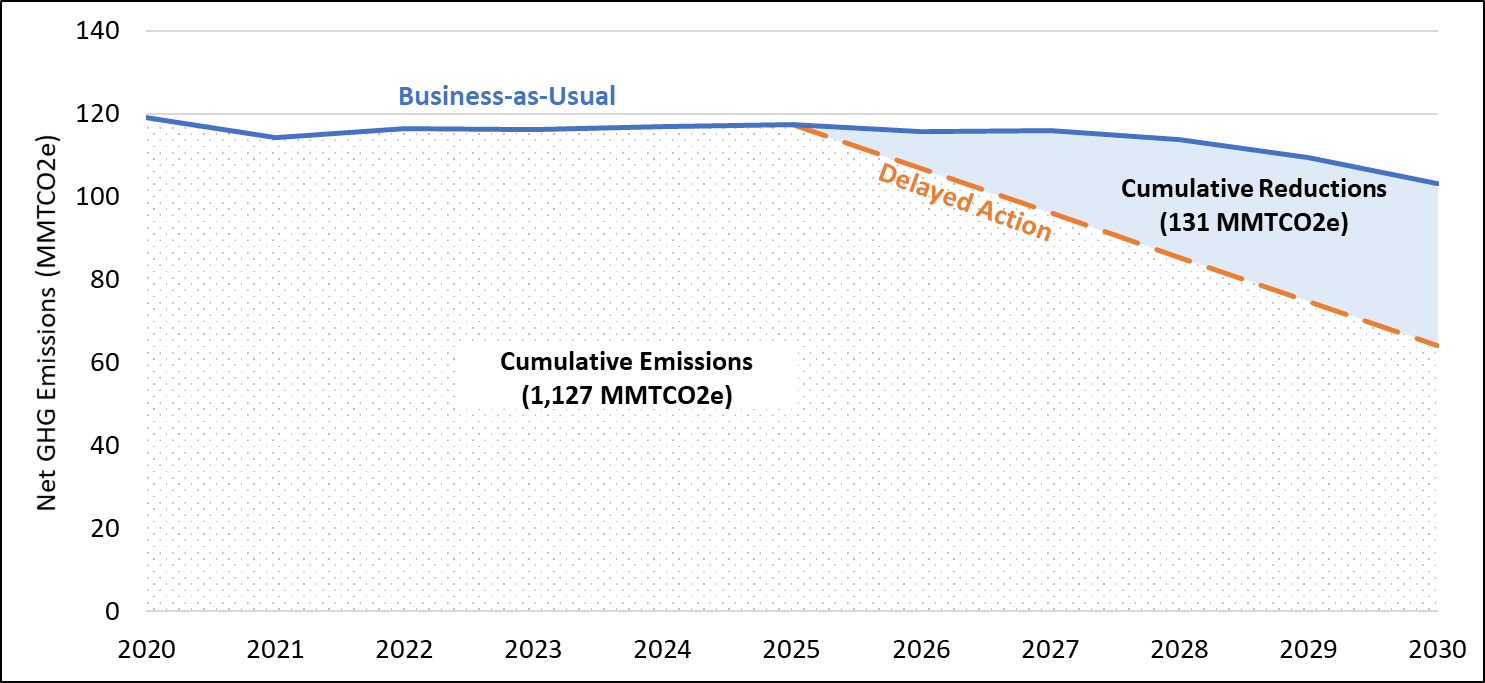
Figure 3: Example Accelerated Emission Reduction Trajectory in Colorado (2020 – 2030)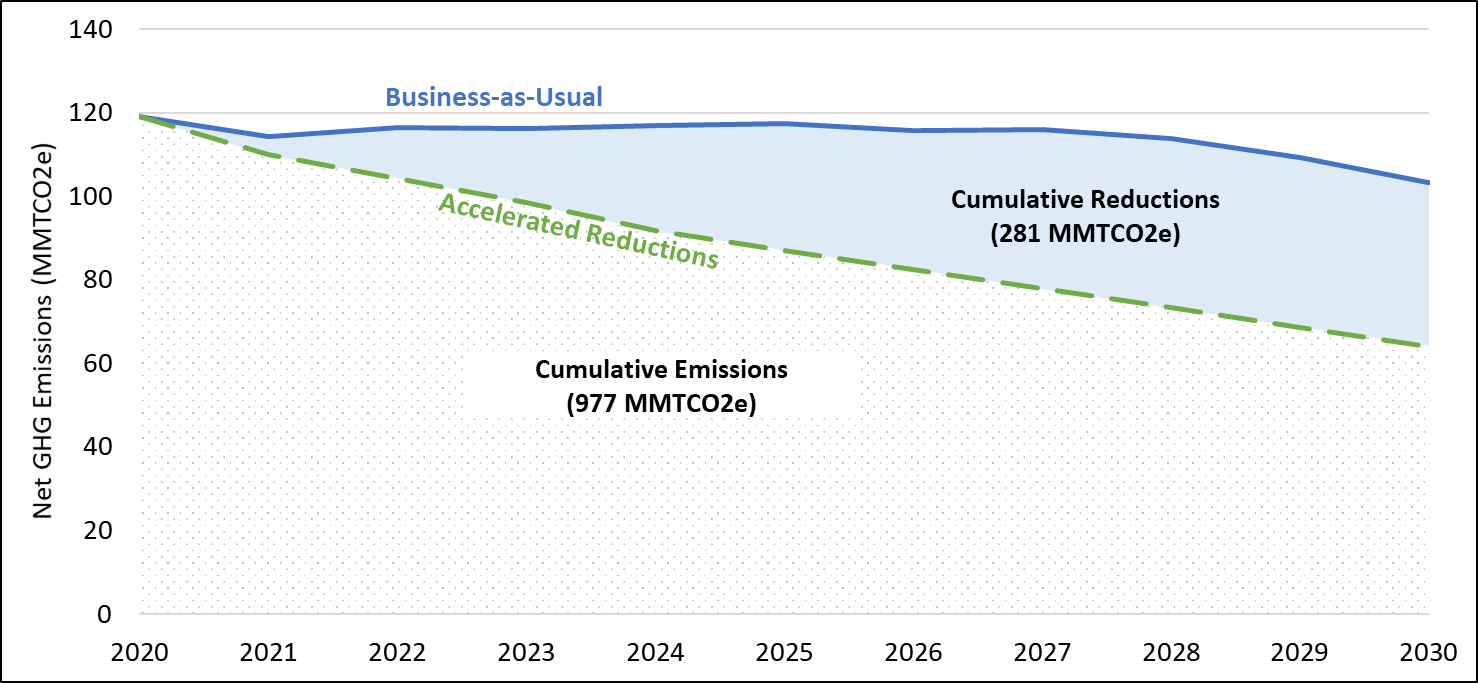
Collectively, these graphs show that statewide emissions targets are not merely benchmarks to “hit” in a specific year, but outline the declining trajectory needed to protect Colorado communities from climate change consistent with IPCC emissions budgets for a 1.5℃ pathway. In other words, climate impacts will depend on how quickly we make reductions, and how persistent these reductions are over time.
Additionally, Figure 4 further illustrates the impact to the emissions budget, showing how all three trajectories vary in terms of total pollution reduced—and the emissions that remain. It is clear that pursuing a path that accelerates emission reductions will curb the most overall pollution and is, therefore, the safest path for Colorado communities.
Figure 4: Cumulative Emission Reductions for Example Trajectories Relative to BAU in Colorado (2020 – 2030)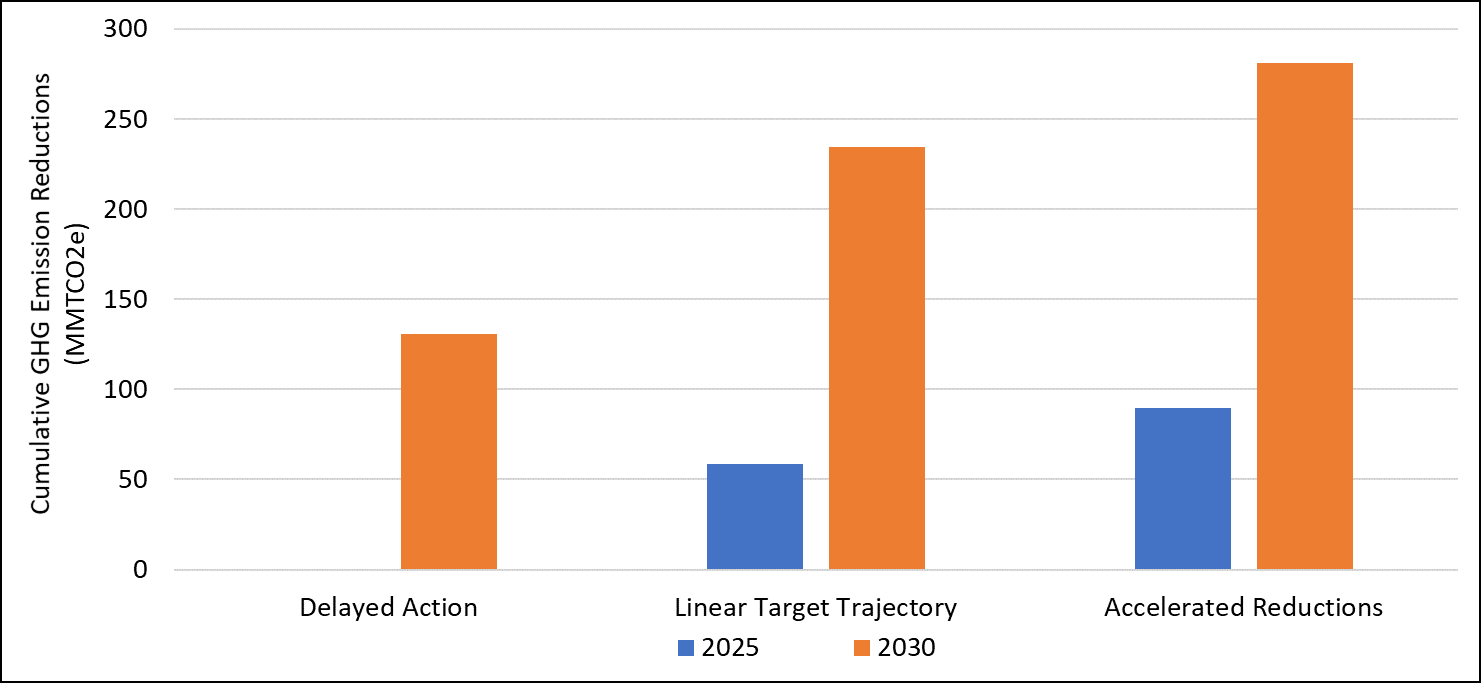
How Colorado can curb emissions
Colorado’s delay is already having a profound impact on total emissions and EDF analysis reveals just how much urgent action – at the pace and scale required – matters for the state’s climate future.
In an effort to help speed up policy action and start-up long overdue stakeholder conversations, EDF is petitioning the Air Quality Control Commission to establish a legally-binding limit on greenhouse gas emissions. The “budget” of allowable emissions under the limit would decline consistent with achieving the state’s climate goals, starting right away in 2022. This limit would work hand-in-hand with any sector-specific policies adopted by the Commission and would provide a backstop that guarantees the needed emission reductions are achieved as cost-effectively as possible. Additionally, EDF’s draft regulation would help drive reductions in local air pollution in disproportionately impacted communities – a requirement that was included in Colorado’s landmark legislation.
Ultimately, the Polis administration and AQCC need to step up to the challenge and support the development of a policy framework that limits statewide pollution consistent with the reductions required under law.
In Part 2 of this blog series, EDF analysis further underscores that point by exploring how Colorado’s policy delay is affecting the state’s ability to meet its own climate targets in 2025 and 2030.









